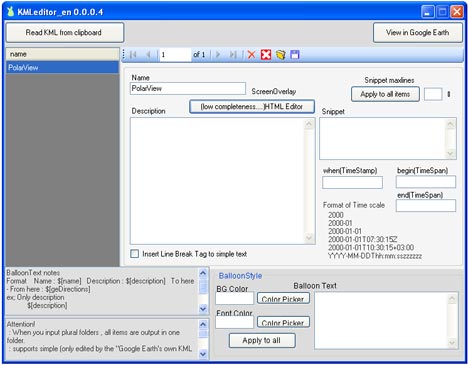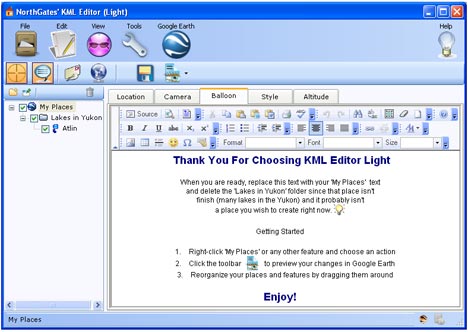Last week saw the launch of International Polar Year, a global effort by thousands of scientists from around 60 countries to research the polar regions in a special coordinated effort. Planning has been ongoing for years, but as luck would have it, concerns about global warming have hit the limelight just as IPY gets going — and the polar regions are the canary in the coalmine of climate change.
Last week, too saw a number of new KML offerings focusing on the poles and on ice-covered regions — the cryosphere. First up is the wholly revamped page listing the KML files of the National Snow and Ice Data Center. Go there to find historical sea ice extents, glaciers with then-and-now photos, permafrost extents, and georeferenced images of Antarctica.
EarthSLOT’s Matt Nolan and a team have been working to put a lot more IPY resources on the map as a Google Earth layer. The result is this KML file, still in beta, and with plenty more stuff to come. As it stands now, the file contains a great georeferenced introduction to IPY, as well as a country-sorted georeferenced list of all IPY-endorsed scientific projects. Expect it to grow too during the next two years, as the results of IPY endorsed projects start to become available.
Finally, to mark the launch of IPY on March 1, the IPY team did something fun with Tagzania — schools from around the world were invited to conduct an ice-related experiment in class, and then launched a “virtual balloon” — which looks remarkably similar to a Google Maps marker:-) — which showed up on the site, and of course on Google Earth too:
IPY tagged map – Tagzania
This map is also the first to use a new feature for embedded maps, which allows you to place up to 200 most recent tagged placemarks — previously, the maximum was 25, but Tagzania’s Luistxo and co. saw this a great opportunity to introduce a new feature.
And all this just in the first week of IPY:-)


